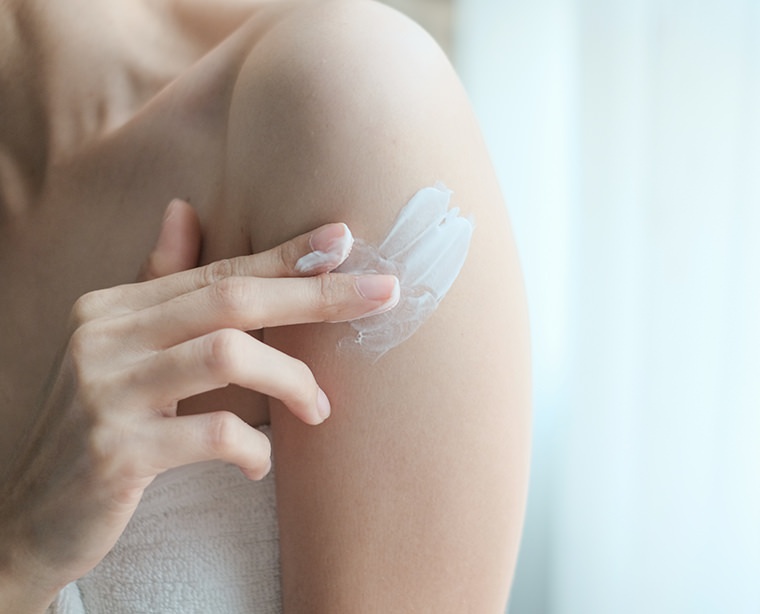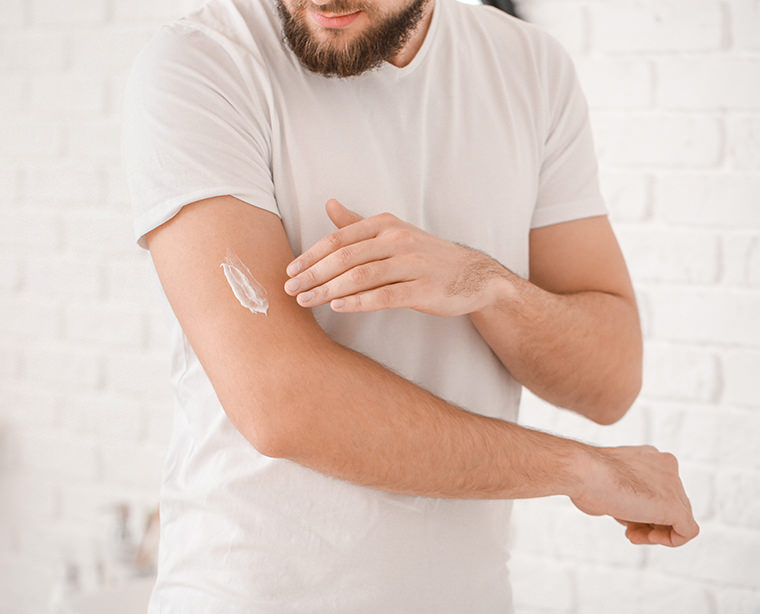

How to apply your cortisone cream for eczema

When you apply your cortisone cream (topical corticosteroid) correctly and in sufficient amounts, you can soothe eczema symptoms significantly: reduce itching, sleep better, etc. Follow these tips to maximize their efficacy!
When to apply topical corticosteroids for eczema
Begin applying from the first signs
Crack open the tube at the first signs of an eczema flare-up. Waiting only increases the risk of making the flare-up worse and even more unbearable. Better to take action as soon as you notice any of the following signs:
- redness
- itching
- unusual texture on the area affected
What if my skin is just dry? No need to apply a topical corticosteroid, but remember to use your emollient!
When to stop applying your cream
Once your skin appears to have gone back to normal, you can stop applying the cream. In other words, when skin is no longer red, itchy or usually thick. This may take several weeks, especially if the skin has thickened. Be sure to keep your skin hydrated with an emollient between flare-ups. In fact, you should never stop applying your emollient.
Once daily
During a flare-up, apply your cream once daily. It’s best to apply it in the evening, after cleansing. You can make a ritual of it, without having to rush. Why not make it part of your bedtime routine, along with brushing your teeth and slipping into your pajamas?
Good habits to adopt
Good habit: apply generously
- Begin by washing your hands so they’re nice and clean.
- Apply directly to red patches, and in ample amounts.
- The cream should even extend beyond the inflamed areas. Apply it in large movements with the palm of your hand, rather than dabbing it on with your fingertips.
How much cream? The fingertip rule
Don’t be shy. Too many people apply too little cream. This reduces its efficacy and causes patients to become frustrated and discouraged by a lack of results. Cortisone cream is a medication, and like any medication, you must use the right dose for it to be effective. You would never take a quarter of a paracetamol tablet and expect it to relieve your pain; the same goes for your cream.
No need to fear: topical corticosteroid creams are safe. But you need to apply an adequate dose for it to work.
The fingertip rule helps you know how much to apply! For an adult, this provides enough cream to treat the surface on the palms of both hands. Of course, you will often need to extract more cream to effectively treat all the red areas.
1 x 30 g tube = 1 application on an entire adult body
Don’t worry; it’s perfectly normal to pick up several tubes on a trip to the pharmacy.
Rules to follow
- Do not use in diapers (except for verified cases of contact eczema, although rare. Atopic eczema does not affect babies’ bottoms.)
- Avoid leaving it on the eyelids too long.
- Adapt the texture depending on the location of the eczema: lotions or gels are suitable for use on the scalp, in adults, or on the skin folds; ointments are preferable on thick skin.
Always in combination with an emollient
Effective eczema treatment requires two products: topical corticosteroids and an emollient.
During flare-ups: topical corticosteroids on red patches + emollient (everywhere except on red patches).
Between flare-ups: emollient alone, all over the body.


